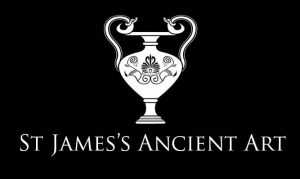The combination of a peacock and branch was a common motif and appeared frequently in Roman art. Peacocks were an exotic bird, first introduced into the Classical world by Alexander the Great from Asia. It was associated with the Roman goddess Juno, know in Greek culture as Hera. In Roman culture and religion, Juno was the wife of Jupiter and the queen of the gods, usually depicted on a chariot drawn by peacocks, her sacred animal, and holding a sceptre capped with a pomegranate, symbol of fertility and marital love. Peacocks were depicted across oil lamps in terracotta and bronze, mosaics and frescoes.
To discover more about the ancient origins of oil lamps, visit our relevant post: Oil Lamps in Antiquity.






